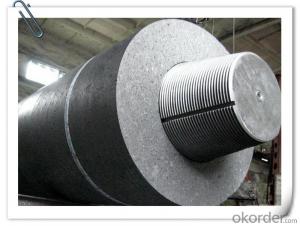When it comes to the world of batteries and energy storage, the humble graphite electrode has been a reliable workhorse for many years. It’s not the sexiest topic, I know, but hear me out. The versatility and efficiency of graphite as an electrode material is nothing short of impressive. It’s like that one friend who’s always there for you, not the most glamorous, but incredibly dependable.
Graphite’s journey as an electrode material began in the early 1990s when it was first used in lithium-ion batteries. Since then, it’s been the go-to choice for many battery manufacturers due to its unique properties. It’s got a high theoretical capacity, which means it can store a lot of energy. It’s also got a stable voltage profile, making it a safe and reliable option. And let’s not forget its low cost, which is a major plus for mass production.
But graphite isn’t just a one-trick pony. It’s incredibly versatile. It can be used in a variety of battery chemistries, from lithium-ion to lithium-sulfur and even beyond. This adaptability is a big part of what makes it so appealing. It’s like that chameleon of the battery world, blending in and performing well in a range of different environments.
Efficiency is another key factor in graphite’s success as an electrode. It has a high tap density, which means it can pack a lot of energy into a small space. This is crucial for devices that need to be compact and portable, like smartphones and laptops. And its excellent electrical conductivity ensures that the energy stored in the battery can be quickly and efficiently discharged when needed.
One of the most exciting areas of research in the world of graphite electrodes is the development of silicon-graphite composites. By combining the high capacity of silicon with the stability and conductivity of graphite, researchers are working on creating batteries with even greater energy density. Imagine a world where your phone can last all day without needing a charge – that’s the kind of potential we’re talking about.
Of course, no material is perfect, and graphite has its challenges. It can suffer from a phenomenon known as ‘capacity fade’ over time, which means its ability to hold a charge can decrease. But researchers are constantly working on ways to mitigate this issue, through improved manufacturing techniques and the development of new materials.
The future of graphite as an electrode material looks bright. As our world becomes increasingly reliant on portable electronic devices and the demand for energy storage grows, the need for efficient and reliable battery technology is more important than ever. And graphite, with its unique combination of properties, is well-positioned to meet this demand.
So, the next time you’re scrolling through your phone or tapping away on your laptop, take a moment to appreciate the unsung hero inside – the graphite electrode. It may not be the most glamorous part of the device, but it’s an essential component that keeps us connected and powered up. It’s the battery’s best friend, the energy storage workhorse, and a true testament to the power of simplicity and efficiency in the world of technology.

